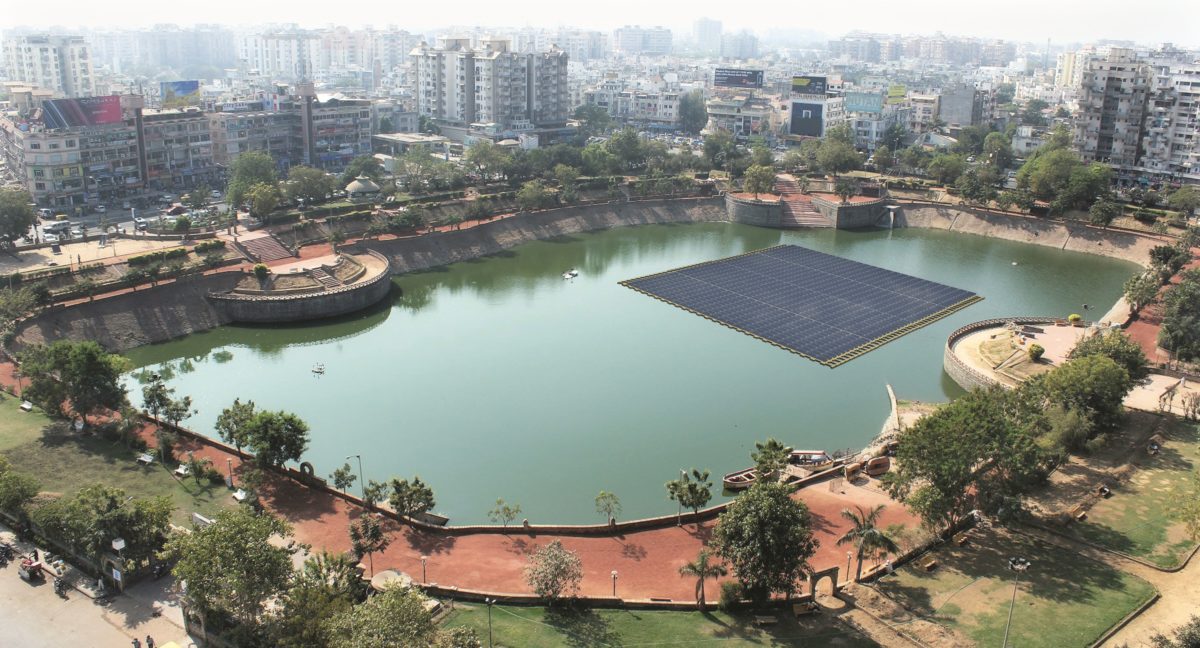Terawatts of floating solar capacity could be built on man-made reservoirs alone, the Solar Energy Research Institute of Singapore (SERIS) says in Where Sun Meets Water, a new floating PV report it has published in cooperation with the World Bank Group and its Energy Sector Management Assistance Program (ESMAP).
SERIS, a research institute under the National University of Singapore (NUS), reports that more than 1.3 GWp of floating solar had already been installed throughout the world by the end of last year. China, Japan, Taiwan and South Korea have thus far dominated deployment of floating PV systems. However, SERIS — which runs the world’s largest floating PV testbed in Singapore — says that a number of projects are now being built in India, Thailand, Vietnam, Singapore, Malaysia, the Netherlands, France and the U.S.
The institute describes floating solar as a fairly new, but rapidly expanding segment of the global PV market, with the potential to become a “third pillar” of the industry after ground-mounted and rooftop solar. Its Where Sun Meets Water report is based on data from its Singapore testbed and the information it has gathered through its work on a number of technical advisory projects.
“Our aim is to share and disseminate relevant information and technical knowledge in this nascent market segment to ensure that floating solar systems worldwide are installed according t o latest best practices,” said Dr. Thomas Reindl, deputy CEO and cluster director of solar energy systems at SERIS. “Through our advisory practice and organizing the International Floating Solar Symposium (IFSS), we also try to build, and constantly expand the global ‘floating solar community’. It is also important to build trust in the technology amongst the various stakeholders and particularly with investors and lenders. They have to be able to fully understand the advantages and opportunities, but also potential challenges and risks.”
Celine Paton, senior financial analyst at SERIS, cautioned against directly comparing floating PV with ground-mounted solar.
“For the case of floating solar, much of the costs will depend on the type of reservoir, its access, depth and water level variation, as well as the source of the floating structure,” Paton explained. “Many technical factors, but also the environmental and social context, have to be considered when deciding to implement floating solar projects. In some cases, floating solar projects can be very cost competitive with ground-mounted PV.”
Dr. Abhishek Kumar, head of the solar system technology group at SERIS, also noted the importance of co-locating floating PV with existing hydro power plants. Dams and their reservoirs provide space for deployment and can be used as storage facilities to mitigate hourly, daily and seasonal variability in irradiance conditions, he added.
“It is also important to understand the extent of the cooling effect and higher energy yield , which will depend on the climate and environment, but also on the design of the floating structures,” Kumar said. “Additionally, considerations for operation and maintenance strategies must be included while designing floating solar systems. Data collection and performance monitoring of floating solar projects across different climate zones will therefore be key to understand the competitive advantages of floating solar.”
This content is protected by copyright and may not be reused. If you want to cooperate with us and would like to reuse some of our content, please contact: editors@pv-magazine.com.



2 comments
By submitting this form you agree to pv magazine using your data for the purposes of publishing your comment.
Your personal data will only be disclosed or otherwise transmitted to third parties for the purposes of spam filtering or if this is necessary for technical maintenance of the website. Any other transfer to third parties will not take place unless this is justified on the basis of applicable data protection regulations or if pv magazine is legally obliged to do so.
You may revoke this consent at any time with effect for the future, in which case your personal data will be deleted immediately. Otherwise, your data will be deleted if pv magazine has processed your request or the purpose of data storage is fulfilled.
Further information on data privacy can be found in our Data Protection Policy.